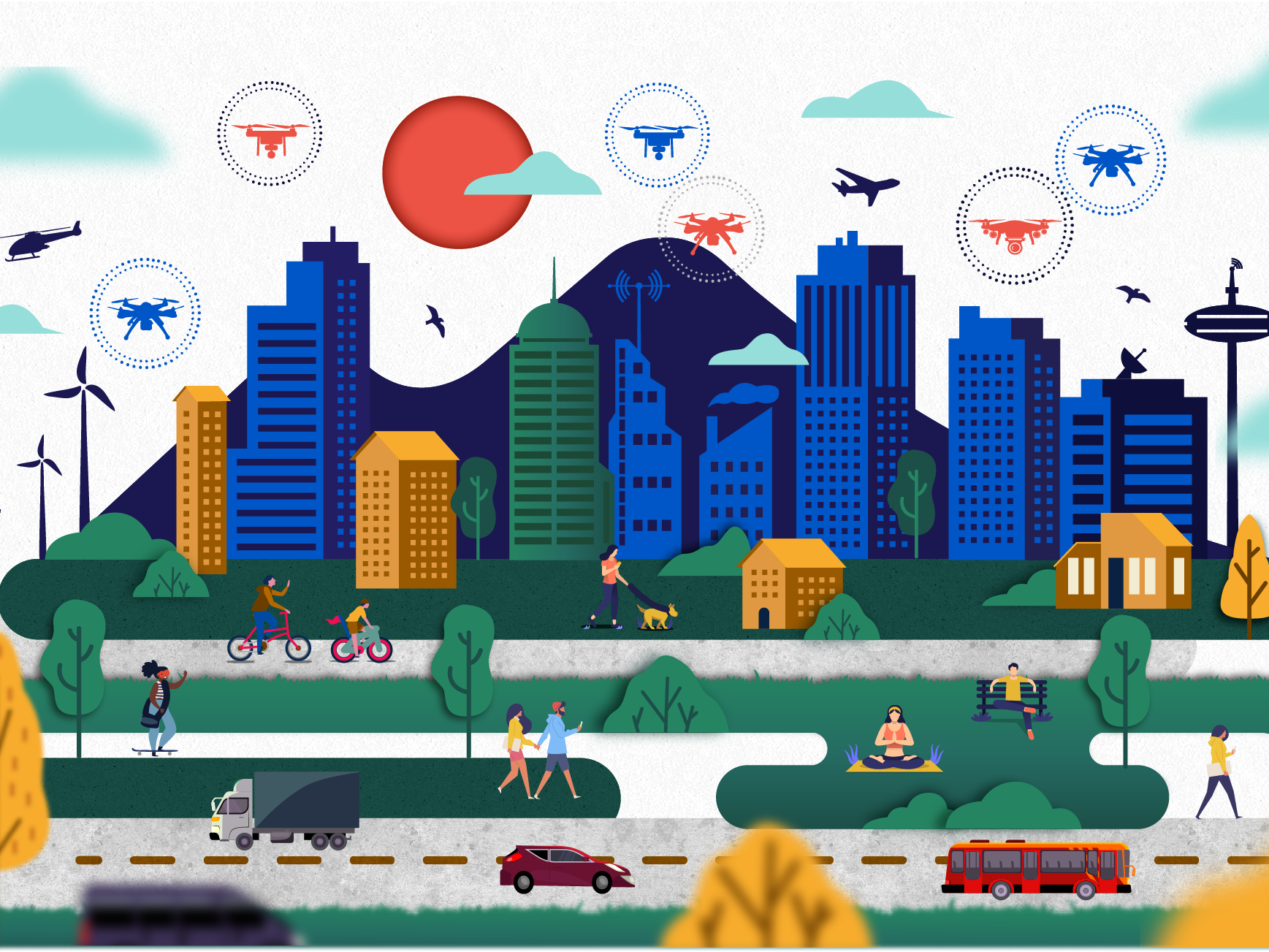Towards a safe use of Unmanned Air Systems. BUBBLES will lay the foundations for a new U-space Separation Management service.
A future challenging airspace The use of Unmanned Air Systems (UAS), like drones, is expected to grow radically in the coming years, taking into account the large number of potential uses they have (delivery, public safety and security, entertainment, etc.) and their expected economic impact. The use of UAS, as it happens with almost any human activity, entails some risks, especially in densely populated areas, like: * ground risk: accidents/incidents involving UAS, people, surface vehicles, buildings or infrastructures. * air risk: accidents/incidents involving manned aircrafts and collisions between UAS. * privacy: improper use of the data collected by the UAS. * security: cyberattacks, jamming, spoofing, terrorist attacks with explosive-carrying UAS, etc. Although the expected benefits of using UAS are, by far, bigger than the risks, it is necessary to cope with the latter so that the benefits can be fully attained. A set of new services relying on a high level of digitalization and automation of functions and specific procedures must be designed to support safe, efficient and secure access to airspace for large numbers of UAS. That forms what is known as the U-space. BUBBLES’s approach The European project BUBBLES will formulate a new advanced service supporting more complex operations in dense areas for U-space Separation Management. This service will define ‘safety bubbles’ around the UAS and will develop procedures to prevent those bubbles touching each-other. To formulate and validate the concept of this U-Space advanced ‘Separation Management service’, BUBBLES will define the basic blocks from which it will be built and describe how they must be assembled and operated. Professor Juan Vicente Balbastre, researcher at the Institute of Information Technologies and Communications (ITACA) of the UPV and coordinator of the project, explains ‘BUBBLES will develop algorithms to compute the collision risk of Unmanned Air Systems UAS (taking into account all the involved risk sources), allowing to define separation minima and methods (procedural, tactical self-separated or tactical ground-based) so that a safety level stated in terms of overall probability of collision can be defined and maintained. BUBBLES will also investigate the use of Artificial Intelligence (AI) to support the separation management, both for centralised and distributed systems. Moreover, BUBBLES will contribute to the standardisation of the U-Space by drafting required performance specifications for the CNS (Communications, Navigation and Surveillance) and AI-based systems involved in the provision of the Separation Management service.’ An excellent team Funded by the EU, through H2020 and the SESAR Joint Undertaking (SESAR JU), with more than €1.6 million for 30 months, starting in May 2020, the project is being launched by a consortium led by Universitat Politècnica de València and comprising the University of Coimbra, Università degli Studi di Roma La Sapienza, the European Organisation for the Safety of Air Navigation (EUROCONTROL) and the global Air Traffic Management leader company Indra. This project has received funding from the SESAR JU under grant agreement No 893206. The SESAR JU receives support from the European Union’s Horizon 2020 research and innovation programme and the SESAR JU members other than the Union.



